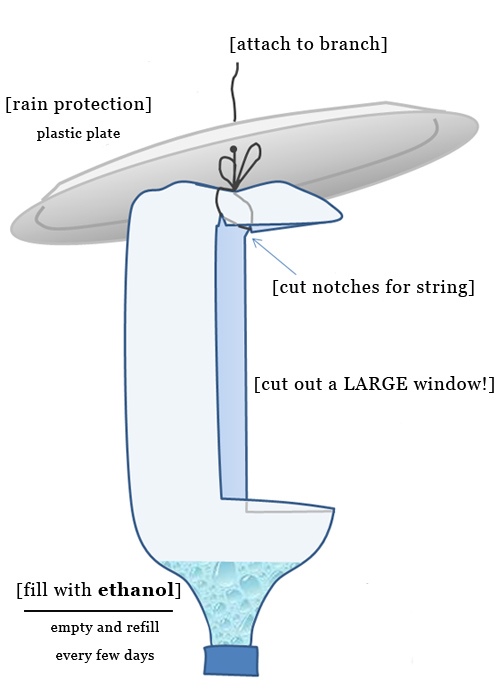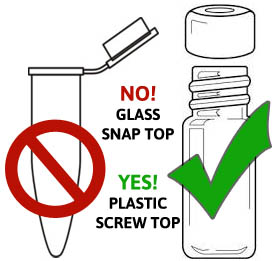How do I trap ambrosia and bark beetles? Use the Bambara Beetle Trap!

How to Build Your Trap PDF Instructions
Cut a large window into a plastic bottle (any 2 liter beverage bottle), pour ethanol into it. Ethanol serves both as an attractant and as preservative.Where do I hang the traps?
Wherever trees grow and you find dead branches or logs. Ambrosia and bark beetles live in dead branches and trees.
Good place: Any forest, the less managed the better.
Not so good: Park, garden, meadow.
Bad: City, field.
How high should you hang it? It doesn’t matter very much. The closer to the ground the better, but not too low, so that wild animals don’t destroy it.
What kind of ethanol?
The best results (most beetles and best-preserved DNA) can be obtained with absolute ethanol, 95% or higher and NON-denatured. If that is not available, 70% ethanol will work. Another possibility is a hand sanitizer as long as ethanol content is 65% or higher.
When should I start and stop?
Start: The sooner, the better! Why not buy more soft drinks now, so you have the bottles on hand?
Stop: After you get the first approximately 100 beetles. After you send us this first batch, we will determine whether you can provide us with high-quality preserved beetles. If so, we’ll be in touch to have you collect more!
How do I collect the beetles?
The simplest way is to unscrew the bottle lid and pour the contents on a tray or a plate. Pick out ALL small beetles (some are really tiny, like this: ![]() ) with a brush or tweezers. They all go into ethanol and in a freezer.
) with a brush or tweezers. They all go into ethanol and in a freezer.
Add a small label with information: Country, Province, City/Area, Date, your name, and mention it’s a “trapped” beetle.
How often do collect beetles and change ethanol?
Ideally daily, at most once every two days. Your beetles will be used for genetic analyses, so they need to be perfectly preserved. If beetles are left int he trap for many days, it can damage their DNA, because ethanol is diluted by atmospheric moisture.
How many traps should I hang?
That’s up to you! The more traps the more beetles you will catch. Make sure that all traps are separated by at least 150ft, to avoid confusing the beetles with overlapping ethanol odors.
What do I do with the beetles?
Send them to us!
Beetles should be sealed in plastic screw-top vials (we can provide them), with just a little bit of ethanol. No refrigeration is necessary for shipping.

Address:
Jiri Hulcr, Forest Entomology Lab
School of Forest Resources & Conservation
University of Florida
PO Box 110410
Gainesville, FL 32611
Price: We will be happy to cover your shipping expenses, including vials. In that case, email us and we will provide you with DHL shipping labels.
Permits: It is very likely that you need a research permit to collect such specimens in your country, and you may also need an export permit to ship them out of your country. Please make sure that your specimens come with proper documentation. (Receiving permits for dead, dry, common pests should not be difficult.) On the US side, you do NOT need a permit to send such specimens into the us (US regulation 7CFR 330.200).
Our team is looking for ambrosia and bark beetles from around the world. If you can provide beetles that are well-preserved, we will be happy to pay $0.50 per beetle! Yes, we will pay 50 US cents for every beetle you send to us. But only for well-preserved ones, and only up to the first 100 beetles. All beetles should be stored in ethanol and placed in the freezer until shipment. After you send us your first batch, we will see if we are getting the right quality of material. If you do a good job, we will contact you to arrange for additional collections.
